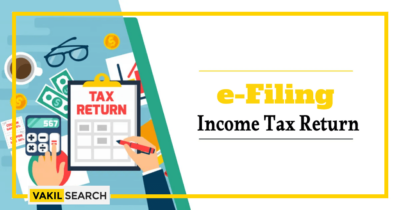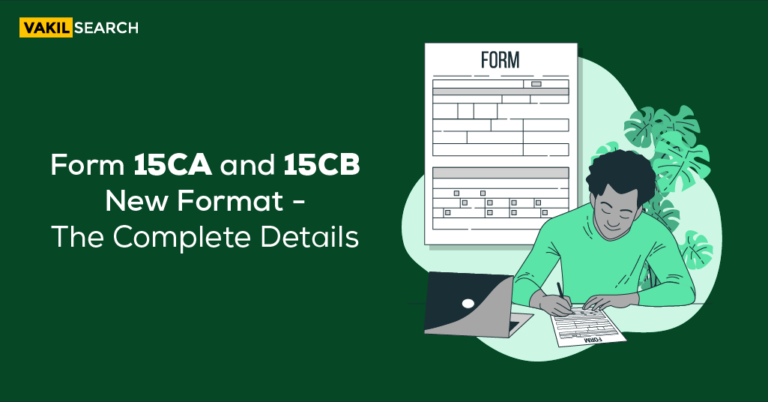Read this blog to understand the applicability of Income Computation and Disclosure Standards and their features. It also explains the different types of ICDS (from 1 to 10)
Filing an Income Tax Return has a substantial legal significance in a salaried or a non-salaried individual’s tax records, as they uphold their lawful integrity and, in the other case, even document their lawlessness. Know When ICDS Applicable While Filing of ITR?
Therefore, it is imperative to maintain a regular and timely record of the Income Tax Returns filed. ICDS, or the Income Computation and Disclosure Standard, is the general guideline regarding the policies governing accounting for an individual’s taxable income. With assistance from the Institute of Chartered
Accountants of India ICAI, the Income Computation and Disclosure Standard (ICDS) is the traditional doctrine for investors/ tax-payers and financial advisors, lays down the rules of adherence to find out or calculate the amount of taxable income of an individual from the sources above, by following the Generally Accepted Accounting Principles (GAAPs) as its standard.
Where Does ICDS Apply and Its Features?
Income Computation and Disclosure Standards are the basis on which the income tax is calculated, necessarily on the amounts of money earned by the assessed through “Income from Other Sources”. One should know about How many types of Income tax rates are present in India to calculate Income Tax.
The “profits and gains on the business” that the same assessed has run throughout the entirety of the financial year also fall under the jurisprudence of the guidelines mentioned in the Income Computation and Disclosure Standards, and the amount for which tax needs to be paid should be calculated according to the Accounting Standard. It should be noted here that the assessed must follow the Mercantile System of Accounting and incomes from Other Sources/ the basic profits and gains of the business.
Other kinds of incomes that fall under “Profits and Gains on business” are when:
- A person involved in the assessee’s business performs special services in a trade or a professional partnership (unlike the general rule that mutually acquired income is not chargeable or taxable).
- ICDS is applicable to non-resident Indians who have incomes either under “from other sources” or “profits and gains on business” and every non-resident should be aware of Non Resident Indian Income Tax Return Form.
- Applicable also on amounts of cash received, be it salaries, stipends, remittance, dividends, interests, or commissions through smaller trade and partnership associations, are all taxable under “Other Sources of Income.”
- Any asset or liability recovered and recuperated from loss.
- The assessee should run the business that qualifies for ICDS to apply on it for a while or more in a financial year, and the rates and charges will be that of the same financial year the business has been run.
ICDS or accounting standard is followed in every other case unless it is one or more of the following conditions:
- If it is an individual or a Hindu Undivided Family (HUF),
- Cash disbursements are made when the cash is actually received by the assessee and not when they were issued or incurred, that is, when the assessee follows the cash system of accounting instead of the Mercantile System of Accounting where the taxable amount on the individual’s income is chargeable under “Profit & gains of business or “Income from other sources”.
- Income Computation and Disclosure Standards will not be considered for calculating the Minimum Alternate Tax or MAT (companies that make a great profit through side businesses are required to pay a minimum amount of tax. For example, for a total profit of 100 crores, MAT- 15 crores.)
Use Vakilsearch`s Income Tax Calculator to determine your taxable income and record your Individual Tax Return (ITR) with ease.
Types of Income Computation and Disclosure Standards:
ICDS I
Income Computation and Disclosure Standards 1 sits well with the standard accounting policies. The three sovereign features of accounting policies are Concern, Consistency, and Accrual.
The concern is with regard to the liquidation of an entity, which is not required due to the perpetual succession of the same. The consistency is a reference to the following of the Mercantile System of Accounting. The accrual refers to the mentioning of payments beforehand, right when they are issued or incurred, and not when they are finally received, unlike the cash method of accounting.
ICDS II
Income Computation and Disclosure Standards 2 is related to the valuation of inventories. The value of the inventories is involved in a way where the cost or the net realisable rate is considered, whichever out of the two is lower than the other one. Most importantly, the cost of inventories requires considering everything, all the charges from purchase to service like transport and relaying and conversion costs, etc.
- It shall include the labor costs. The tax is levied on transport from one location to another and on the products themselves.
- Conversion costs are the basic ground products required in the making of the final one that is purchased. Storage costs are not involved in the cost of inventories as well as the expenses in wasted and unratified costs.
- The inventories that do not fall under the jurisprudence or guidelines of ICDS 2 are the kinds of work-in-progress (construction under IDCS 3), tangible assets (under IDCS 5) or cattle, agricultural crops and produce, tree and mineral oils, natural gases and more, that are measured at their net realisable value.
ICDS III
Income Computation and Disclosure Standards 3 deals with incomes derived through construction contracts. There are two methods involved in determining the type of construction contracts that have been undertaken to thereby understand how exactly the ICDS will apply to each.
- A Fixed Price Contract, as the name suggests, is one where the contractor agrees to be paid at a pre-determined and mutually agreed upon rate on the work done or for the entire project altogether.
- Whereas Cost Plus Contract means that a particular amount of part of the work will be reimbursed for, as agreed upon by the contractor. If negotiations have been already made for multiple contracts singularly, then they shall all be treated as a singular contract even if they belong to different people and come through different projects.
- If the negotiations are done differently for the same contract due to considerable differences in technology or design, or labour, then the construction project can be treated as more than one.
- The costs will include directly involved and required amenities as well as associated services.
ICDS IV
Income Computation and Disclosure Standards 4 deals majorly with the recognition of revenue. Recognition of revenue primarily refers to the income through dividends, interests, and so on by doing activities involved in the business of sales, like selling services and materials and generating income in the form of the aforementioned categories. Dividend income is recognized as per the provisions of the Act.
- Services are monitored, and payment, profit or transaction of service provided is withheld till the contract is almost complete or around a fixed time during which the contract is being worked on or completed.
- Payments will only be processed to the seller when it is clear that the seller no longer retains any rights to the products or services transferred, has attached the related risks or rewards to the purchaser, and owns no links to the same.
ICDS V – Income Computation and Disclosure Standards 5 is related to Tangible Fixed Assets. It identifies the services and includes the cost of purchase, making, development, and production taxes. It also includes any fluctuations noticed from the beginning of production till the end.
ICDS VI – Income Computation and Disclosure Standards 6 deals with Foreign Exchange Rates and records and assesses their chances. On the date of the transaction, the exchange rates are considered, an average is made of the exchange rates and is used at the closing rate (for foreign currency monetary items), and the resulting amount is paid. If there are many fluctuations on one day, then the average exchange rate on that particular day is used. One should also be aware of Foreign Income Tax Rate in India.
ICDS VII – Income Computation and Disclosure Standards 7 is about Government Grants
ICDS VIII – Income Computation and Disclosure Standards 8 deals with securities in the exchange of products and services by a bank or similar institution.
ICDS IX – Income Computation and Disclosure Standards 9 is related to the borrowing costs of the production that capitalise assets such as buildings, plants and machinery, patents, licenses, trademarks, copyrights, and any other business or commercial rights.
ICDS X – Income Computation and Disclosure Standards 10 deals with the Provisions, Contingent Liabilities and Contingent Assets
FAQs
What is the ICDS for tax audit?
The ICDS for tax audit refers to a set of accounting standards issued by the Central Board of Direct Taxes (CBDT) in India. These standards aim to establish consistency in the computation of taxable income, providing a framework for taxpayers to follow while conducting tax audits.
What is the purpose of the ICDS scheme?
The purpose of the ICDS scheme is to bring uniformity and transparency to the computation of taxable income. It ensures that businesses and individuals report their income in a consistent manner, reducing discrepancies and promoting fair taxation.
Who launched ICDS scheme in India?
The ICDS scheme in India was launched by the Central Board of Direct Taxes (CBDT), which is the apex authority for administering direct taxes in the country.
Who are the benefits of ICDS?
The benefits of ICDS extend to taxpayers, tax authorities, and the overall tax ecosystem. Taxpayers benefit from clear guidelines for income computation, reducing the chances of disputes. Tax authorities benefit from standardized reporting, simplifying the audit process and enhancing tax collection efficiency.
What is the structure of the ICDS?
The ICDS comprises several standards, each addressing specific aspects of income computation and disclosure. These standards cover areas such as revenue recognition, valuation of inventories, construction contracts, and more. The structure ensures comprehensive guidance for different types of income.
What are the ICDS for income tax?
The ICDS for income tax are a set of standards that dictate how various income components should be recognized, measured, and disclosed for tax purposes. They include ICDS standards such as ICDS-I (Accounting Policies), ICDS-II (Valuation of Inventories), ICDS-III (Construction Contracts), and more.
What is disclosure as per ICDS for construction contracts?
Disclosure as per ICDS for construction contracts involves providing detailed information about revenue recognition, cost allocation, and the overall financial performance of construction projects. It ensures that taxpayers report their income from such contracts accurately and transparently.
Conclusion
By checking the features of Income Computation and Disclosure Standards and determining which criteria from 1 to 10 they fall into, one can put them to use for the computation of the total taxable income. According to the Income Tax Act (ITA): https://www.incometax.gov.in/iec/foportal, an Assessing Officer can, at his will, conduct an assessment (Section 144) if the business or individual fails to compute their income based on Income Computation and Disclosure Standards.
Also, Read:










